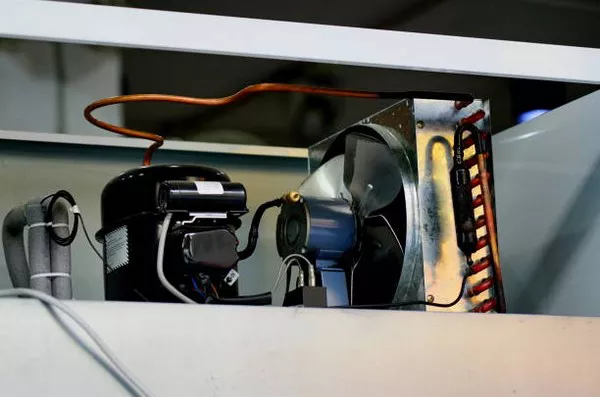In various industries, compressors play a pivotal role in transforming gases and vapors into a compressed state, enabling efficient storage and transportation. From refrigeration systems to industrial processes, compressors are integral components that facilitate countless applications. In this article, we delve into the fundamentals of compressors, exploring their types and diverse applications across different sectors.
What is a Compressor?
A compressor is a mechanical device designed to increase the pressure of a gas by reducing its volume. By utilizing energy, compressors enhance the kinetic energy of gas molecules, resulting in higher pressure and density. This compressed gas finds extensive use in a myriad of industrial, commercial, and residential applications.
Types of Compressors
Compressors are classified based on their operating principles, design configurations, and specific applications. The main types of compressors include:
1. Positive Displacement Compressors:
These compressors work by trapping a volume of gas and then reducing its volume to increase pressure. Positive displacement compressors include:
Reciprocating Compressors:
Reciprocating compressors utilize pistons driven by a crankshaft to compress gas. As the piston moves downwards, gas enters the cylinder, and upon upward movement, the gas is compressed. These compressors are often used in small-scale applications and where high pressure differentials are required.
Rotary Screw Compressors:
Rotary screw compressors consist of two intermeshing helical screws housed within a casing. As the screws rotate, they draw in gas and progressively compress it along the length of the screws. These compressors are widely employed in industrial settings due to their high efficiency, reliability, and capacity for continuous operation.
Rotary Vane Compressors:
In rotary vane compressors, vanes mounted on a rotor sweep along the inner surface of a housing, compressing gas trapped between the vanes and the housing. These compressors are known for their compact design and relatively low maintenance requirements, making them suitable for various applications, including automotive and HVAC systems.
2. Dynamic Compressors:
Dynamic compressors operate by imparting kinetic energy to gas through high-speed rotating impellers. The kinetic energy is then converted into pressure energy as the gas slows down. Major types of dynamic compressors include:
Centrifugal Compressors:
Centrifugal compressors feature a rotating impeller that accelerates gas radially outward. The high-speed gas is then directed into a diffuser where its kinetic energy is converted into pressure. Centrifugal compressors are widely used in large-scale industrial applications such as gas turbines, air separation plants, and petrochemical processes due to their high flow rates and moderate compression ratios.
Axial Compressors:
Axial compressors employ a series of rotating and stationary blades to continuously increase gas pressure along the axis of rotation. These compressors are commonly utilized in aircraft engines, power generation, and turbochargers, where high efficiency and compact design are crucial.
Applications of Compressors:
Compressors find diverse applications across various sectors, including:
1. Refrigeration and Air Conditioning:
In refrigeration and air conditioning systems, compressors play a vital role in circulating refrigerants to remove heat from enclosed spaces. Both positive displacement and dynamic compressors are used in these applications to maintain optimal temperature and humidity levels in residential, commercial, and industrial settings.
2. Industrial Processes:
Compressors are indispensable in numerous industrial processes such as pneumatic conveying, gas compression, and process air applications. They provide the necessary pressure and flow rates for powering pneumatic tools, controlling process variables, and transporting bulk materials efficiently.
3. Oil and Gas:
In the oil and gas industry, compressors are utilized for gas gathering, transmission, and processing operations. Centrifugal compressors, in particular, are commonly employed in natural gas processing plants, liquefied natural gas (LNG) facilities, and pipeline networks to boost gas pressure for transportation and storage.
4. Power Generation:
Compressors are integral components of power generation systems, including gas turbines, steam turbines, and internal combustion engines. They supply compressed air for combustion, cooling, and control systems, thereby enhancing the efficiency and performance of power plants.
5. Automotive Industry:
Compressors are essential in automotive applications such as turbocharging, air braking systems, and air suspension systems. Turbochargers, driven by exhaust gases, compress intake air to increase engine power and efficiency, while air brakes utilize compressed air for braking and vehicle control.
Conclusion:
Compressors represent a diverse class of mechanical devices that play a critical role in numerous applications across various industries. Understanding the different types of compressors and their applications is essential for selecting the most suitable equipment for specific requirements. Whether it’s maintaining comfortable indoor environments, powering industrial processes, or enhancing energy efficiency, compressors continue to be indispensable components driving innovation and progress in modern engineering.

